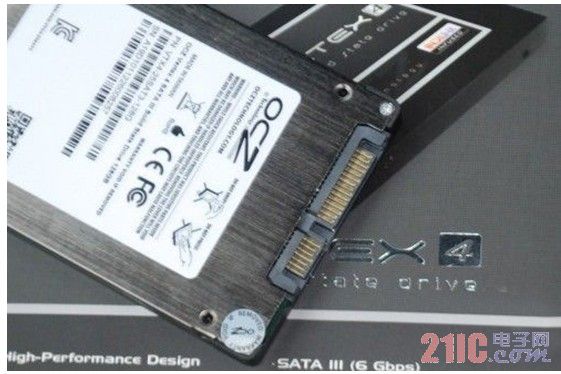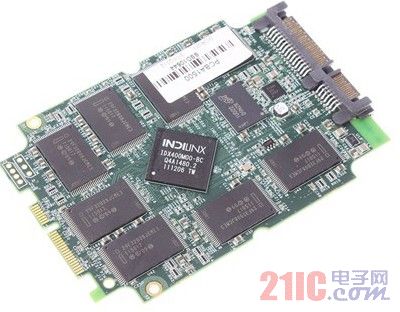The emergence of SSD solid state drives is a revolution, injecting new vitality into the old PC architecture. Limited by the way the mechanical hard disk works, although the capacity of the hard disk has increased year by year, performance has always been a bottleneck. Due to the use of flash memory as a storage medium, SSDs are more powerful than traditional mechanical hard drives. But SSD is not perfect. We should also pay attention to the performance of SSD. The capacity of SSD is far less than that of mechanical hard disk. The life of SSD is much lower than that of mechanical hard disk. The performance of SSD decreases with the increase of usage time. The reason users are holding a wait-and-see attitude toward SSD. 
This article refers to the address: http://
Since SSD uses NAND flash memory, it is made up of floating gate-metal oxide semiconductor field effect transistor (Floating Gate MOSFET) as the basic memory unit. The floating gate of FET is not permanent because of each operation. Both of them are broken through the floating electric field by a strong electric field. As the number of writing and erasing increases, the floating gate level will also fail. The NAND write is called Progrqm during the power-on process, the erase process is called Erase, and the complete P/E cycle is the NAND write cycle. From here, it can be seen that the SSD wants to write data. It is necessary to restore the default potential, which is based on the "erasing", this feature determines the way the SSD data is written.

NAND is divided into SLC, MLC and TLC, SLC refers to single-layer memory cells, MLC refers to multi-layer memory cells, MLC can store more data than SLC, so the cost is lower, but MLC performance is lower than SLC, and life It should be much shorter. Now the mainstream 25nm process MLC has a P/E cycle of about 3000-5000 cycles, and as the process increases, the number of P/E cycles will decrease. It seems that the contradiction between SSD capacity, cost and life will always exist.
How to extend the life of SSD, in addition to the selection of high-quality NAND particles, SSD master and Firmware become the key. In pursuit of performance and attention to life issues, OCZ's Vertex 4 SSD balances performance and longevity with INDILINX nDurance 2.0 technology, a unique NAND flash management technology that enhances reliability and durability and ultimately extends flash memory life. . It seems that OCZ is not blindly pursuing performance. OCZ itself is built by technical experts who are passionate about computer DIY, so it can better understand what products users need. Vertex 4 features the latest INDILINX Everest 2 master, with dual-core ARM processors providing the highest level of performance and user experience, with 1GB of DDR3 cache, Vertex 4 performance is impressive. At the beginning of the article, performance is expected to decrease as SSDs are used for a long time and the remaining space is reduced, mainly because of the increase in page fragmentation. OCZ has a unique solution. When the remaining space is more than 50%, OCZ uses high-performance mode to provide very good continuous read and write performance. When the remaining space exceeds 50% of the benchmark, the standard performance mode is started and OCZ will reorganize. The page is garbage collected and has an impact on performance in about ten minutes, but it only happens once, which is definitely worth the life of the SSD. 
For evaluation labs that only pursue performance data, OCZ's efforts to extend the life of the SSD are often overlooked because the media does not test how long it takes for an SSD to break. Therefore, when the Vertex 4 capacity exceeds 50%, the sudden performance degradation occurs, and some media believe that the OCZ life extension technology causes the read/write speed to slow down. Because the Benchmark program can't distinguish the SSD master switching mode, it will not wait for the GC to complete. This is a problem with the test method. For ordinary users, the GC has already completed without knowing it. In fact, in some authoritative media such as Anandtech, it has been analyzed in detail that Vertex4 performs GC recovery when the capacity exceeds 50%, which only temporarily affects performance and only once.

The pursuit of speed regardless of cost is only applicable to the evaluation laboratory. The real SSD users pay more attention to the cost performance of the product. In fact, the fish and bear's paw can have both, Vertex 4's life extension technology can have both performance and lasting vitality. It is the concept that OCZ has always been responsible for consumers by spending their own money to buy real practical technology.
Semiconductor Disc Devices(Capsule Type) is the abbreviation of thyristor, also known as Silicon Controlled Rectifier, formerly referred to as thyristor; thyristor is PNPN four-layer semiconductor structure, it has three poles: anode, cathode and control pole; thyristor has silicon rectifier The characteristics of the parts can work under high voltage and high current conditions, and their working processes can be controlled and widely used in electronic circuits such as controlled rectifiers, AC voltage regulators, contactless electronic switches, inverters, and inverters.
Semiconductor Disc Devices(Capsule Type)
Semiconductor Disc Devices,Inverter Thyristor,Phase Control Thyristor,Capsule Type Semiconductor Disc Devices
YANGZHOU POSITIONING TECH CO., LTD. , https://www.yzpst.com